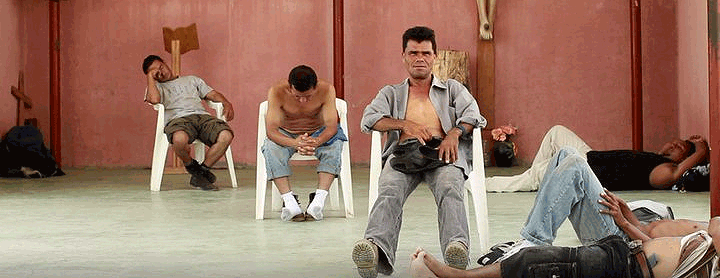Tracing Migration
One such place is the border between the US and Mexico, which is now at its most militarised in US history as the US embarked on its “war on immigration”. Mexico, in turn, is both a destination for migrants, as well as a stop on their way north. Ten thousand migrants every year (according to an estimate by Amnesty International) attempt to cross that border, the majority of whom are Central Americans (from Honduras, Nicaragua and El Salvador in particular). It is not known how many more of these irregular migrants enter Mexico to settle there, or what percentage cross into the US undetected.
Those who do succeed, however, may find themselves in the Arizona desert, or are detained and deported. What is more, these migrants are not only kept from getting into the country: their very journey is thwarted along the way.
Those who are crossomg the Americas towards the US border will often do so on foot, undertaking a dangerous journey. As many of them are undocumented individuals, they must dodge the strict migration controls within Mexico, which means they find themselves on obscure, unsafe routes, along which they may face assault or abuse, or encounter smugglers and traffickers. Large numbers of people are reported missing along these routes and the number of kidnappings is high.
Across the border, migration calls to mind other issues: of employment, housing and social standing. Migration is a complex issue, interlinking the factors pushing people out of their home countries with those that pull them into their new one. Poverty, the lack of opportunities and insecurity at home are reasons for people to leave – while their arrival can have economical, political and cultural consequences. One strong fear is that migrants will take a toll on the local economy and impact the job market. (Although, historically, Mexican migrant workers have been welcomed – as far back in 1850s as field hands in the Southwest, and when the US entered in WW2 in 1942 – albeit on temporary contracts.) This image, of “the other” coming in and “stealing” the locals’ livelihood, or “spoiling” their culture, can become part of polarised political debates, as it has in the US. In a more recent development, many of the policies designed for the enforcement of immigration law, especially detainment, have become privatised, along with the increased militarisation of the border.
This comes down to 650 miles of fence and 21,000 Border Patrol Personnel. In 2012, a total of $18 billion was spent on the enforcement of the border. While there are no hard numbers on the (undocumented) immigrants, their flow towards the US border seems to have slightly decreased – probably partly because of this securitisation, and partly because of the bad economy. Nevertheless, the dangers en route remain. The heightened enforcement along the Mexico–United States barrier does nothing to bring safety to their journey, let alone a solution to the circumstances that made them search for their fortune away from home in the first place.
Migration is a universal occurrence: people have moved away from their homes to settle elsewhere countless times in the course of history, in mass migrations due to wars or natural disasters or as individuals looking to escape poverty and a better future. Human stories are needed to gain a deeper understanding of the issues that come into play in the lives of those who have decided on the perilous undertaking of crossing the border.
In the documentary Who is Dayani Cristal?, Mexican activist Gael Garcia Bernal traces back the trail of one such unfortunate migrant found dead in the Sonora Desert, Arizona. The film, a mix of documentary with fictional elements, was the winner of the Sundance Cinematography Award in 2013. It was screened at the Frontline Club on Monday 7 July, followed by a Q&A with director Marc Silver. For further details of this event, see here.
